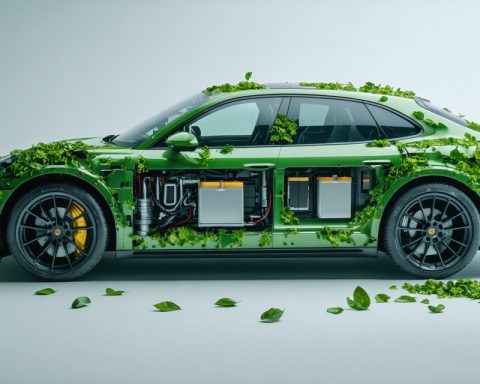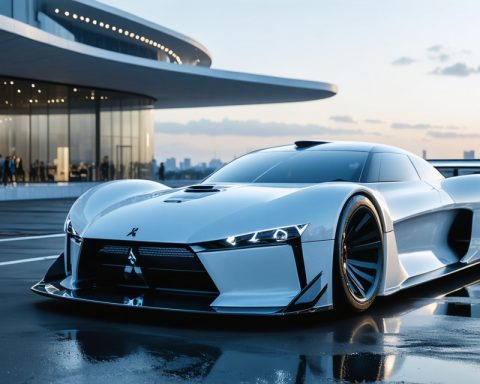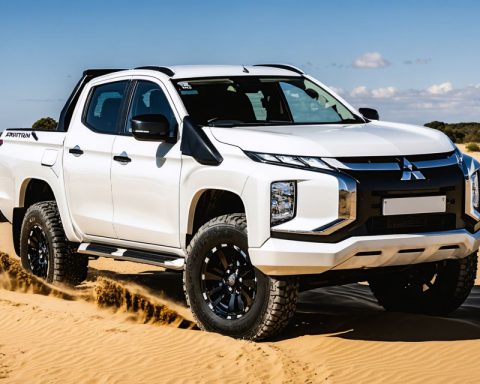- The U.S. electric vehicle (EV) assembly line faces setbacks due to policy uncertainties, impacting economic growth across states like Georgia and Arizona.
- Uncertainty around tariffs and tax incentives has led to numerous project cancellations, with more EV projects canceled in early 2025 than any recent period.
- Significant facilities, including a $1 billion thermal battery plant in Georgia and a $1.2 billion lithium-ion factory in Arizona, have been halted.
- China leads the global EV market with nearly 50% penetration, while North America lags at 15%, risking the U.S. falling behind in the automotive shift.
- Corporate hesitancy grows, with startups faltering and companies like Hyundai shifting to hybrids; investment in clean manufacturing dropped significantly in January.
- The industry debate underscores the need for clear policies and commitment to revive U.S. manufacturing competitiveness in the EV sector.
The dream of an electric vehicle assembly line stretching across the United States, turbocharged by sweeping tax incentives, has encountered a roadblock. An alarming surge of project cancellations is unraveling a once deceptively vibrant EV narrative—projects that were designed to energize economies from Georgia’s rolling hills to Arizona’s desert landscapes.
Uncertainty lurks at the core. Intense policy debates hover over incentives that once fueled what seemed like an unstoppable momentum. The volatile winds of forthcoming tariff discussions and potential clawbacks of key tax credits have flickered a candle of doubt in the corporate boardrooms. This uncertainty has proven costly: more EV projects were canceled in the first quarter of 2025 than at any comparable period in the past two years.
A $1 billion thermal battery facility in Georgia lies buried under halted progress, while a $1.2 billion lithium-ion factory in Arizona is now a dream relinquished. Jobs, once heralded, are now precariously perched as this industrial stasis stifles opportunity in states craving economic revitalization.
Amid this turmoil, China is seizing pole position. With an electric vehicle market that races toward the mark of 50% penetration, it’s leaving the Western world in its dust. In stark contrast, North America barely scratches the 15% mark, prompting fears that the U.S. risks becoming a bystander in the new automotive era.
What was once aspiration is now introspection. Startups that once showed promise now falter, and giants like Hyundai pivot to hybrids. The rhetoric of reinvigorated energy is undermined, its gleam dulled by unpredictable legislative battles. The figures tell the tale: January saw a mere $176 million earmarked for clean manufacturing, a far cry from the former billion-dollar norm.
Such is the fragile dance of innovation and policy—one misstep, and fortunes hang in balance. Bob Keefe strikes a resonant chord, pointing fingers at uncertainty itself as the true adversary of progress. A shimmering opportunity cast adrift, as ambition yields to hesitancy.
These uncertainties prompt introspection for an industry standing at a crossroads. American innovation is stifled, and meanwhile, the international competition accelerates. The takeaway? Clearity and steadfast commitment can pave the way for another resurgence in the American manufacturing narrative. The stakes have never been higher, and the need for decisive guidance has never been more pressing.
The Hidden Truth Behind EV Project Cancellations: What’s Next for the Industry?
The electric vehicle (EV) assembly line dream in the United States faces significant challenges as a surge in project cancellations threatens what was once a booming sector. Here’s a deeper dive into the factors contributing to this situation, along with actionable insights for the future of the EV industry.
Key Issues and Market Dynamics
1. Policy Uncertainty and Legislative Impacts: The U.S. EV market’s struggle is heavily influenced by legislative uncertainties. Tax incentives and tariff policies are in flux, causing hesitation among investors and manufacturers. According to the recent report from the International Council on Clean Transportation, policy stability is crucial for consistent market growth.
2. China’s Dominance: As the U.S. grapples with policy issues, China continues to advance, nearing 50% market penetration of EVs. Chinese manufacturers benefit from robust government support and a focused strategy, outpacing Western competition. Reports from Bloomberg highlight China’s investment in both EV technology and infrastructure, making it a formidable competitor.
3. Economic Repercussions: The cancellation of high-profile projects like the $1 billion thermal battery facility in Georgia means lost job opportunities and economic setbacks. The U.S. Energy Information Administration points out that these projects are vital for local economies, and stalling them has significant negative impacts.
Industry Trends and Projections
1. Shift to Hybrid Models: Manufacturers like Hyundai are pivoting towards hybrid vehicles, blending traditional and electric technologies. This shift signals a more cautious approach as companies await more stable policy environments.
2. Startups at Risk: Many startups in the EV sector are facing financial difficulties due to the lack of clear incentives and market support. Established companies with diverse portfolios find it easier to weather the storm compared to startups solely focused on EVs.
3. Investment Trends: The U.S. saw only $176 million earmarked for clean manufacturing in January 2025, a significant drop from the billion-dollar investments of the past. This decline underscores investor wariness fueled by unpredictable policy shifts.
Practical Recommendations and Steps Forward
1. Advocating for Policy Clarity: Industry leaders and stakeholders must advocate for coherent policy frameworks that offer long-term certainty. Collaboration with policymakers can lead to a stable environment that encourages investment and innovation.
2. Diversified Investments: Companies should diversify their portfolios to include hybrids and other technologies to navigate current uncertainties while still positioning for a future dominated by EVs.
3. Leveraging International Partnerships: U.S. companies could form strategic alliances with foreign entities to leverage their advancements in EV technology and infrastructure.
4. Focus on Infrastructure: Building a robust EV infrastructure, including charging stations and battery recycling facilities, is crucial for mainstream acceptance and growth within the country.
Final Thoughts
Navigating the current EV industry challenges requires a balanced approach—embracing policy alliances, diversifying investments, and holding a steadfast commitment to innovation. By addressing uncertainty with strategic clarity and focus, the U.S. can reclaim its position as a global leader in the burgeoning EV market.
For the latest insights and developments in energy and vehicle industries, visit the U.S. Energy Information Administration.
Stay informed, stay proactive, and commit to the transformative potential of electric vehicles as a cornerstone of future transportation.























